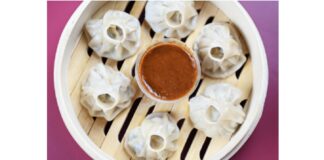
The ball in Times Square will begin its descent just before midnight tomorrow. If you’re still in need of plans for ushering out the old year, you could try reserving a table at one of the places on this short list, which includes a couple of festive ordering-in possibilities. Or, if you’re feeling adventuresome, you could try partying the way they do in these diverse cultures around the world.
You could try, for example, raiding the fridge and eating yourself into utter oblivion. That’s what they do in Estonia where they welcome the New Year by chowing down on as many as a dozen whole meals the night before. And we are not talking tasting menu-size portions, which you can swallow in a single bite. Traditional New Year’s Eve favorites include sauerkraut and marzipan. (For a unique experience you could try mixing the two together.) Just take care not to leave the cupboards bare. If you do, the angry spirits of ancestors may drop by for a visit.
The custom in Spain on the last day of the year is to take the grape challenge. Similar to the saltine challenge, players try to stuff a dozen grapes into their mouths at midnight — one for each chime of the clock — and swallow them before time runs out. Completing the challenge will banish evil spirits from crossing over into the new year. If you fear the risk of choking to death, you could instead adopt the custom of the town of La Font de la Figuera in Valencia. There everyone dons a new pair of red skivvies and runs down the street at midnight regardless of the temperature, which averages 35 degrees that time of year.
Filipinos engage in a more benign practice to ensure a spirit-free new year. They collect and embellish the family table with 12 round fruits (oranges, melons, etc.), one for each month. Then they eat. Roundness in the culture signifies prosperity.
Too tame? Then do as they do in Ireland, where they bang bread against the walls and doors to chase away bad luck and evil spirits. Tip: Avoid day-old bread if you’re planning to hurl the loaves at windows. (In Greece, they throw pomegranates against the door, believing the fruit symbolizes fertility, life, and abundance. The more seeds that end up scattered, the luckier the year to come.)
New Year’s Eve celebrations in Germany include a feast centering on Silvesterkarpfen, or “New Year Eve Carp.” The fish, which is baked, pan-fried, grilled, or smoked, is served with other seafood, including trout, salmon, crab, sturgeon, eel, lobster, crayfish, and oysters. The meal sounds harmless enough — pleasant even if you are a fan of carp, which is the primary ingredient in gefilte fish. But it takes a turn for the weird at meal’s end. Each celebrant is given a piece of carp skin to carry in his wallet for the next 12 months. Removing the skin is believed to bring bad luck.
What’s peculiar about the custom of eating oliebollen in the Netherlands on New Year’s Eve is not the dish itself (oliebollen are doughnut holes) but the myth surrounding the custom, which dates to antiquity. Germanic tribes were said to eat these deep-fried orbs at Christmastime so that when the goddess Perchta (aka Perchta the Belly Slitter) tried to cut their stomachs open and stuff the cavities with trash, the fat from the dough would cause her sword to slide off. The Dutch simply changed the date of the custom.
If the fact that the Russians drink ashes on New Year’s Eve sounds revolting, be advised that the ashes in question are not the earthly remains of a relative purloined from its urn. Rather, celebrants write their wishes for the new year on slips of paper, burn the pages, and mix the ashes into a glass of champagne. Cheers!
Some people divine their future by reading tea leaves. In the Czech Republic, they read apples freshly halved on New Year’s Eve to forecast the year to come. If the core of the cut apple resembles a star, everyone present will meet again soon in happiness and health. If the core looks like a cross, it’s curtains for someone.
See also…
Several Possibilities for Dining In or Out on New Year’s Eve This Year














